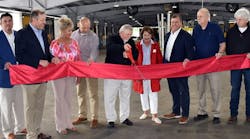Say “cost control” in trucking circles, and most people automatically jump on operating costs. Squeezing out more fuel efficiency, stretching tire life and component longevity through better maintenance practices, striving to reduce accidents, and making other operational improvements are all worthy avenues to bettering the bottom line.
But don't neglect starting at the very beginning, too. It sounds elementary yet the impact on operating costs of how vehicles are spec'd in the first place is often overlooked.
That's the contention of Robert Johnson, fleet management liaison for the National Truck Equipment Assn. (NTEA), who points out this is particularly critical for “work trucks” that are specially outfitted for a vast range of vocational applications.
To get the lowest operating cost after the purchase, he says it is imperative to have written specifications that cover as many components as possible.
“Far too often, fleets purchase on a hunch,” says Johnson, a former fleet manager. “In today's cost-conscious, competitive environment, it's more important than ever that fleet managers take the time to understand their vehicle needs and evaluate components for the lowest overall life cycle costs.”
Johnson recommends five rules for spec'ing commercial vehicles for maximum return on investment:
-
Develop written specs for complete vehicle applications (including “upfits”). Without these, fleets may receive different components depending on which upfitter assembled a particular vehicle.
-
Standardize components. Standardizing ensures continuity from dealer to dealer and upfitter to upfitter. Most upfitters have their own preferred brands, so if the fleet does not specify which brand to install, the brand used may vary. Standardizing also minimizes the number of parts that have to be stocked.
-
Don't “under-spec” or “over-spec.” Fleets that want to save every penny up front tend to spec for the lowest possible purchase cost. But the resulting vehicles often perform poorly and incur more downtime and maintenance costs. Other fleets avoid the “cheap trap” but buy the most heavy-duty components available — whether the application requires them or not. These “over-designed” vehicles generally cost more up front and may require more expensive maintenance and repair components.
-
Identify vehicle requirements based on job requirements. The most important guideline to follow when spec'ing is to optimize components for application. Identify the vehicle's basic functional requirements, then consider additional features to increase productivity, reduce maintenance costs and improve operator comfort. Parameters to consider include: net payload, operating conditions, operating/loading cycle, starting/reserve gradability, towing requirements, maintenance environment, operator proficiency, regulations, minimum road speed and contractual requirements.
-
Consider life-cycle costs. A vehicle optimized for an application will provide the lowest overall cost of ownership over its lifetime — when all factors are considered. The primary factors are initial purchase price, long-term operating and maintenance costs, vehicle productivity and resale value.
“It's very important that fleet managers learn as much as they can about the various components that go into their work trucks, so they can make informed purchasing decisions,” Johnson says.
Johnson is slated to lead a technical session, “Component Spec'ing for Optimum Vehicle Life-Cycle Costing,” on March 3 at NTEA's “Work Truck Show 2005” in Indianapolis, IN. For more information on the show, go to NTEA.com or call 1-800-441-NTEA.


